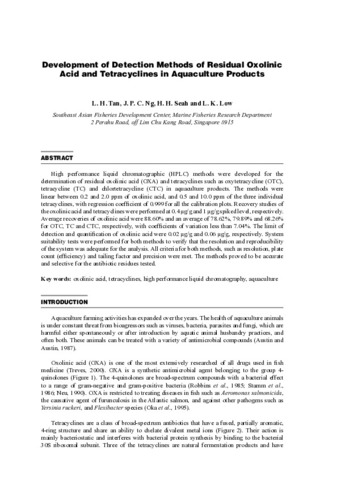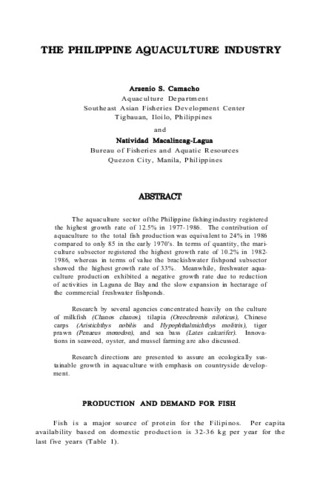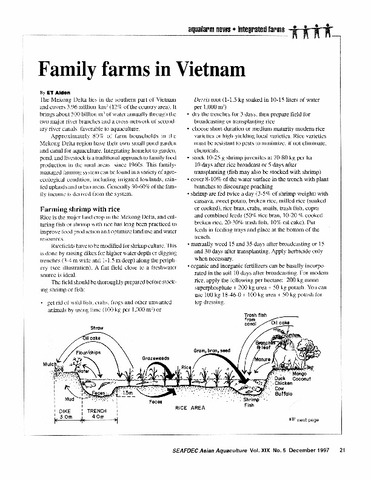Development of detection methods of residual oxolinic acid and tetracyclines in aquaculture products
- Global styles
- MLA
- Vancouver
- Elsevier - Harvard
- APA
- Help
Share
Abstract
High performance liquid chromatographic (HPLC) methods were developed for the determination of residual oxolinic acid (OXA) and tetracyclines such as oxytetracycline (OTC), tetracycline (TC) and chlortetracycline (CTC) in aquaculture products. The methods were linear between 0.2 and 2.0 ppm of oxolinic acid, and 0.5 and 10.0 ppm of the three individual tetracyclines, with regression coefficient of 0.999 for all the calibration plots. Recovery studies of the oxolinic acid and tetracyclines were performed at 0.4 μg/g and 1 μg/g spiked level, respectively. Average recoveries of oxolinic acid were 88.60% and an average of 78.62%, 79.89% and 68.26% for OTC, TC and CTC, respectively, with coefficients of variation less than 7.04%. The limit of detection and quantification of oxolinic acid were 0.02 μg/g and 0.06 μg/g, respectively. System suitability tests were performed for both methods to verify that the resolution and reproducibility of the system was adequate for the analysis. All criteria for both methods, such as resolution, plate count (efficiency) and tailing factor and precision were met. The methods proved to be accurate and selective for the antibiotic residues tested.
Suggested Citation
Tan, L. H., Ng, J. P. C., Seah, H. H., & Low, L. K. (2005). Development of detection methods of residual oxolinic acid and tetracyclines in aquaculture products. In K. Nagasawa (Ed.), Recent Advances in Diagnosis and Prevention of Fish and Shrimp Diseases in Southeast Asia (pp. 337–346). Tigbauan, Iloilo, Philippines: Aquaculture Department, Southeast Asian Fisheries Development Center.
Type
Book chapterISBN
9718511732
Related items
Showing items related by title, author, creator and subject.
-
The Philippine aquaculture industry
Camacho, Arsenio S.; Macalincag-Lagua, Natividad (Aquaculture Department, Southeast Asian Fisheries Development Center, 1988)The aquaculture sector of the Philippine fishing industry registered the highest growth rate of 12.5% in 1977-1986. The contribution of aquaculture to the total fish production was equivalent to 24% in 1986 compared to ... -
Family farms in Vietnam
Aldon, Eva T. (Aquaculture Department, Southeast Asian Fisheries Development Center, 1997) -
Nursery and grow-out operation and management of Penaeus monodon (Fabricius)
Corre, Kaylin G. (Aquaculture Department, Southeast Asian Fisheries Development Center, 1988)The results of research on nursery and grow-out rearing of prawn conducted by the SEAFDEC Aquaculture Department for over a decade are reviewed. Different rearing facilities designed to accommodate hatchery-produced prawn ...


 AQD Access
AQD Access



